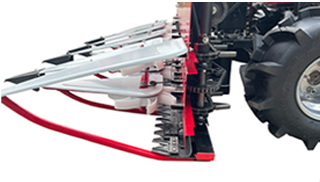Sep . 26, 2024 02:07 Back to list
Understanding the Function and Importance of Drum Brake Systems in Vehicles
Understanding Drum Brake Drums Key Components and Functionality
The drum brake is one of the oldest and most reliable forms of braking systems used in vehicles today. While disc brakes have gained popularity in modern vehicles, drum brakes are still widely utilized in various applications, particularly in heavier vehicles such as trucks and buses. At the heart of the drum brake is the brake drum, an essential component that plays a critical role in the vehicle's stopping power.
Understanding Drum Brake Drums Key Components and Functionality
The functionality of a drum brake system can be broken down into several key steps. When the driver applies the brake pedal, hydraulic pressure is generated in the braking system. This pressure causes brake shoes—lined with friction material—to expand outward against the inner surface of the brake drum. This friction action slows the rotation of the drum and, consequently, the wheels, bringing the vehicle to a stop.
drum brake drum

One of the greatest advantages of drum brakes, particularly in heavy vehicles, is their self-energizing feature. As the brake shoes press against the drum, they tend to follow the drum's rotation, which increases the pressure against the shoes. This results in a more effective braking force that can be particularly advantageous when handling heavier loads or steep declines.
However, drum brakes do have some drawbacks compared to disc brakes. For instance, they are more susceptible to overheating, especially during prolonged use, which can lead to brake fade—a reduction in braking efficiency due to excessive heat. Moreover, drum brakes can be more complex to service and maintain due to their enclosed design, where dust and debris can accumulate over time, potentially leading to wear and reduced effectiveness.
Regular maintenance is crucial to ensure the optimal performance of drum brake systems. This includes checking the brake shoes for wear, inspecting the brake drum for grooves or cracks, and ensuring the hydraulic system is functioning correctly. Neglecting maintenance can result in decreased braking efficiency and, ultimately, compromise vehicle safety.
In summary, the brake drum plays an indispensable role in the functionality of drum brake systems. Its ability to generate the necessary friction to stop a vehicle makes it a critical component, especially in heavy-duty applications. While drum brakes may not be as prevalent in modern passenger vehicles, they remain a vital technology in the automotive industry, demonstrating the balance between reliability and performance. Understanding the mechanics behind brake drums enables vehicle owners and operators to appreciate their importance in overall vehicle safety and maintenance.
-
Iveco Brake Drum | Premium OE Quality for Daily & Eurocargo
NewsAug.22,2025
-
Your Brake Drum Man: Quality & Performance Parts
NewsAug.21,2025
-
Explore Japan: Ultimate Travel Guide & Authentic Experiences
NewsAug.19,2025
-
Your Brake Drum Man: Premium & Reliable Brake Drums for Sale
NewsAug.18,2025
-
ROR Web Development: Build Fast, Scalable, Secure Apps
NewsAug.17,2025
-
Scania Brake Drums: OEM Quality for Optimal Safety & Durability
NewsAug.16,2025
